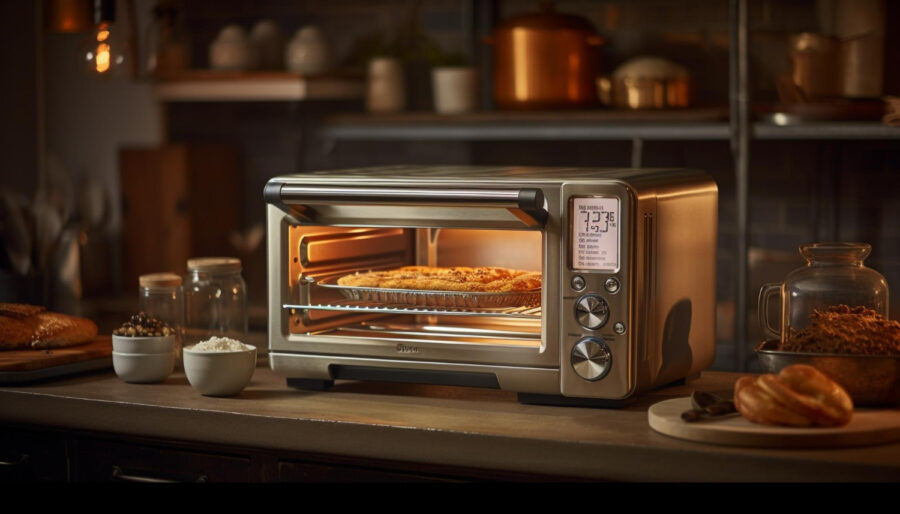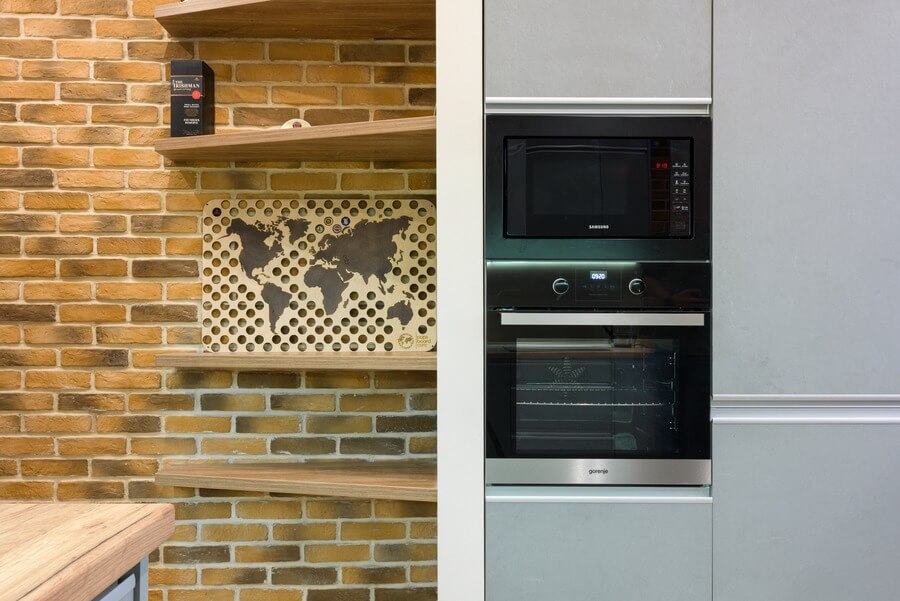Microwaves, like other kitchen appliances, make heating food more accessible and convenient. Using radiation to heat food lets you enjoy hot eatables in less than a minute. Unfortunately, it is susceptible to malfunctioning, especially after use for an extended period.

A famous problem is the microwave not heating food but running normally. This can be due to several reasons, such as a faulty high-voltage diode or door switch. Whichever the case, fixing it can be as easy as going through the user manual. This article provides a step-by-step guide on how to troubleshoot the heating problem. Let’s get into it.
Check The High-Voltage Diode
The first reason why your microwave is not heating food but running could be due to a faulty high-voltage diode. A crucial part of a microwave, it supplies high voltage to power the magnetron. It converts high-voltage AC into DC (direct current).
If the diode becomes faulty, it can cause your microwave not to heat or uneven heating of food. Here’s how to test your microwave’s high-voltage diode:
Tools To Use
- Multimeter
- Safety gloves
- Insulated pliers
How To Fix A Faulty High-Voltage Diode
- For safety, unplug the microwave from the power source.
- Locate the high-voltage diode. Depending on the model of your microwave, you might need to remove a cover or an access panel.
- Discharge the capacitor to prevent electrocution or bodily injuries. For this, you should use the insulated pliers.
- Locate the diode with two terminals: one to the magnetron and the other to the capacitor.
- Use the multimeter to test for the diode’s continuity. You can use the continuity mode or diode testing. It would help if you used the diode testing mode.
- Use both forward and reverse bias methods. It is faulty if the diode passes the forward bias test but fails the reverse bias option. If it fails both tests, it is also incorrect.
- If faulty, replace it with a new one, ensuring its orientation is similar to the old one. Make sure to consult the user manual for a suitable model.
Check The Magnetron
A magnetron is a microwave component that produces radiation for heating your food. With a faulty magnetron, your microwave will not heat food but will run normally. A faulty magnetron can be due to damaged ceramics, damaged elements, or a broken heater or filament. Here is a step-by-step procedure to diagnose a defective magnetron.
How To Fix A Faulty Magnetron
- Make sure to disconnect the microwave from the power source. Also, wear safety gloves to protect yourself from electrocution.
- Remove the appliance’s cabinet to access the magnetron.
- Inspect the magnetron for visual damage. Check for abnormal discoloration, burnt areas, or cracks. If you notice any physical damage, you may need to replace it with a new one.
- Measure the unit’s continuity using a multimeter. Make sure to set it to resistance or continuity mode. Touch one probe to the magnetron’s terminal connected to the high-voltage transformer. Touch the other probe to the magnetron’s ground. You should get a resistance reading of 2-3 ohms. If there’s no reading, the magnetron is faulty.
- Measure the magnetron’s filament resistance while in resistance or continuity mode. The filament or cathode might need to be fixed if the reading is at most 10 ohms.
- Buy from the manufacturer or a trusted third-party dealer when making the replacement.
Examine The Door Switch
Another reason your microwave is not heating food but running could be due to a faulty door switch. The door switch signals other components to supply power to the microwave. If this component is defective, it might allow the stirrer motors and fan to work. However, the heating may not happen.

How To Fix A Faulty Door Switch
- Disconnect the microwave from the power source. Wear protective goggles and gloves to protect yourself from bodily injuries.
- Next, inspect the door switch for visible damage or tear and wear. Make sure to check for disconnected wires or burnt terminals. If there’s any visible damage, we’d recommend replacing it with a new one instead of repairing it.
- If the door switch is intact, test it for continuity. Here, you should use a multimeter while set in continuity mode.
- To test the door switch, locate it around the door latch or where it closes. Consult the user manual for the precise location.
- With the door open, press and hold the door switch plunger. Place one multimeter probe on one switch terminal and the other probe on the other terminal.
- The multimeter should show continuity with the plunger held down. If there’s no reading, the door switch is faulty.
- If faulty, make sure to buy a replacement one from the manufacturer or a trusted third-party vendor.
- To replace it, disconnect the wires from the old switch.
- Remove the switch from its mounting.
- Install the new one in the exact location as the old one.
- Secure the switch using brackets or screws.
- Finally, reconnect the microwave to the power source and test whether the door switch works correctly.
Examine The Thermal Protector
Like other household electronics, microwaves have thermal protectors which prevent overheating. As you’d expect, if the microwave is not heating, the thermal fuse is likely faulty. If this is the case, you must replace it with a new one. Consider buying the specific parts from the microwave’s manufacturer for best results.
How To Fix A Faulty Thermal Fuse
- Unplug the microwave from the power source.
- Wear protective goggles and gloves to prevent electrocution or bodily injuries.
- Locate the thermal fuse. This should be near the heating element. Other models have it located within the circuit that monitors temperature.
- Use a multimeter to check for continuity.
- Set the multimeter to resistance or continuity mode.
- Gently remove the thermal protector from the microwave.
- Place the multimeter probe on each terminal of the thermal protector.
- There should be continuity if the fuse is in good condition. Otherwise, the fuse needs replacement.
- Order a replacement unit from your microwave’s manufacturer. Ensure the fuse has a current and temperature rating similar to the old one.
- Reconnect the new fuse to the microwave, ensuring it has a similar orientation as the original one.
- Finally, reconnect the microwave to the power source and test whether it is heating food correctly.

Final Thoughts
As you can see, your microwave not heating food but running can result in several issues. It could be due to a blown thermal fuse or faulty door switch. If a blown thermal fuse is the cause, we recommend buying from the manufacturer of the microwave. For a door switch, use a multimeter to test for continuity.
It would help to keep your microwave clean by regularly wiping down the interior to prevent it from malfunctioning. Also, avoid overheating food or liquids since it can damage the microwave. Finally, perform regular maintenance, replacing damaged components.
